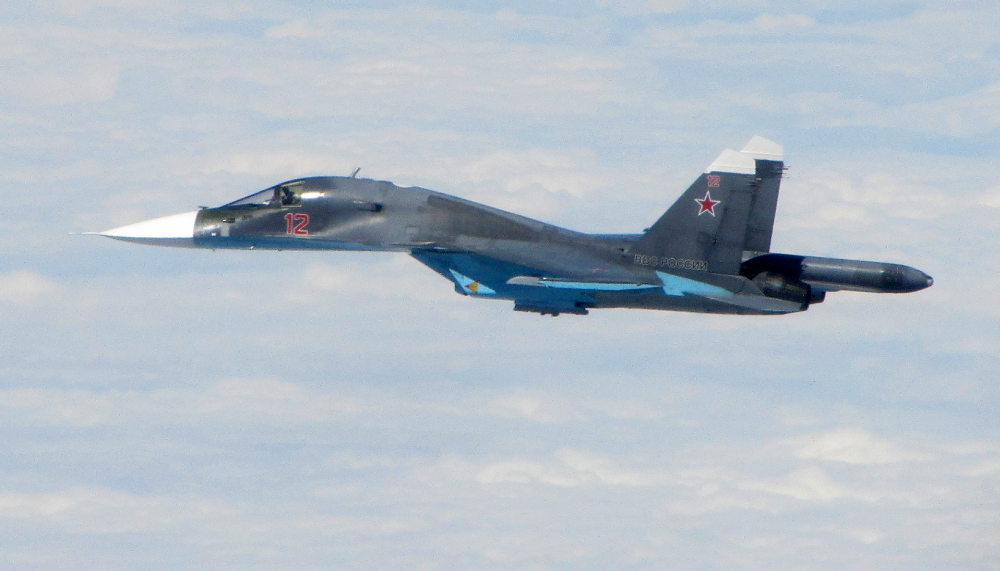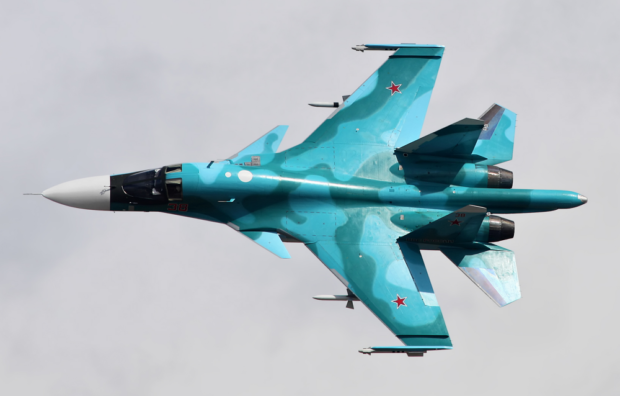In the thick of 2022, as Russia’s invasion of Ukraine sent shockwaves across the globe, a faint glimmer of hope persisted. Many believed that Putin’s vaunted hypersonic weapons couldn’t be efficiently utilized, given that the MiG-31K, their usual carrier, had become a rare sight in the post-Soviet skies. But that fragile comfort was shattered in mid-March. The sky roared, not with a MiG but a Sukhoi Su-34 strike/bomber.
With terrifying precision, it released the first Kinzhal hypersonic missile in the conflict, showcasing that this post-Soviet warplane was far from obsolete and a formidable force to be feared. Though the Su-34 had seen minimal action since its official induction into the Russian Air Force in 2014, this brazen act thrust it back into the limelight. Sleek, nimble, and boasting an impressive 4,000-kilometer range and a 14,000-kilogram bomb capacity, the aircraft seemed unstoppable.
But as it tore through the skies over Ukraine, a haunting story began to unravel piece by piece. The battlefield soon bore witness to the charred remains of the Su-34, and theories emerged about its design being its own worst enemy.
The Sukhoi Su-34 (Russian: Сухой Су-34; NATO reporting name: Fullback) is a Soviet-origin Russian twin-engine, twin-seat, all-weather supersonic medium-range fighter-bomber/strike aircraft. It first flew in 1990, intended for the Soviet Air Forces, and it entered service in 2014 with the Russian Air Force.
Based on the Sukhoi Su-27 Flanker air superiority fighter, the Su-34 has an armoured cockpit with side-by-side seating for its two pilots. The Su-34 was designed primarily for tactical deployment against ground and naval targets (tactical bombing/attack/interdiction roles, including against small and mobile targets) on solo and group missions in daytime and at night, under favourable and adverse weather conditions and in a hostile environment with counter-fire and electronic warfare (EW) counter-measures deployed, as well as for aerial reconnaissance. The Su-34 is planned to eventually replace the Su-24 tactical strike fighter and the Tu-22M long-distance bomber.
Development
The Su-34 had a murky and protracted beginning. In the mid-1980s, Sukhoi began developing a new tactical multirole combat aircraft to replace the swing-wing Su-24, which would incorporate a host of conflicting requirements. The bureau thus selected the Su-27, which excelled in maneuverability and range, and could carry a large payload, as the basis for the new fighter-bomber. More specifically, the aircraft was developed from T10KM-2, the naval trainer derivative of the Sukhoi Su-27K. The development, known internally as T-10V, was shelved at the end of the 1980s sharing the fate of the aircraft carrier Ulyanovsk; this was the result of the political upheaval in the Soviet Union and its subsequent disintegration.

An air-to-air image taken over Baltic airspace by Typhoon air crew, intercepting a Russian Sukhoi Su-34 aircraft. As part of NATO’s ongoing mission to police Baltic airspace, RAF Typhoons intercepted 10 Russian aircraft during a single Baltic Air Patrol, QRA (Quick Reaction Alert) mission 2015
In August 1990, a photograph taken by a TASS officer showed an aircraft making a dummy approach towards the aircraft carrier Tbilisi. The aircraft, subsequently and erroneously labelled Su-27KU by Western intelligence, made its maiden flight on 13 April 1990 with Anatoliy Ivanov at the controls. Converted from an Su-27UB with the new distinctive nose, while retaining the main undercarriage of previous Su-27s, it was a prototype for the Su-27IB (IB stands for istrebitel-bombardirovshchik, or “fighter bomber”). It was developed in parallel with the two-seat naval trainer, the Su-27KUB. However, contrary to earlier reports, the two aircraft are not directly related. Flight tests continued throughout 1990 and into 1991.
Sources: Wikipedia; YouTube

